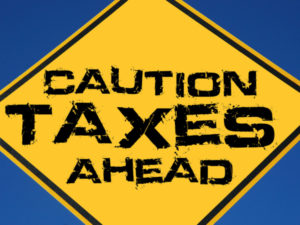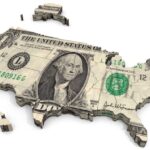States with high taxes, despite taking more of their citizens’ money, tend to have poorer infrastructure and services. So it’s no surprise that citizens who live in those states also have a greater desire to leave.
Steven Malanga explains this phenomenon in The Wall Street Journal, and suggests that labor laws have a lot to do with the dissonance between state revenues, and the output generated by state services. He writes:
Seven of the eight states with the highest percentages of people who want to move elsewhere are solidly Democratic in party affiliation, according to Gallup polling. Most are high-tax environments. “Even after controlling for various demographic characteristics including age, gender, race and ethnicity, and education, there is still a strong relationship between total state tax burden and desire to leave one’s current state of residence,” Gallup concludes.
When Monmouth University’s poll asked New Jersey residents why they wanted to leave, 30% listed taxes. But 24% said the overall high cost of living soured them on the Garden State, and 28% listed quality-of-life issues, including corruption, traffic and lack of economic opportunity.
In most polls, infrastructure—roads, bridges and airports—ranks high among the basics that citizens and businesses expect government to provide. This should be an area in which rich, high-tax states vastly outperform their peers, but the opposite is true. In CNBC’s annual ranking of the best and worst states for business, seven high-tax states were among those ranked lowest in infrastructure quality—Connecticut, Hawaii, Maryland, Massachusetts, New Jersey, New York and Rhode Island.
Even more startling, Texas ranked as having the best infrastructure. Also scoring high were Tennessee, which has the third-lowest tax burden as a share of state personal income, and Florida, ranked fourth-lowest in taxes. There seems an almost inverse relationship between the resources that state governments take in and quality of infrastructure.
J.D. Power polling shows that the U.S. airports ranked lowest among travelers include New York’s LaGuardia and JFK, New Jersey’s Newark Liberty, Philadelphia International, Chicago O’Hare, Los Angeles International, Honolulu Inouye International and Boston Logan. Almost all serve high-tax blue states.
A major driver of these failures is the alliance between left-leaning politicians (mostly, but not exclusively, Democrats) and public unions. As state and local budgets have fattened, public employees have captured a growing share of the rising revenue. Connecticut, the state with the second most heavily unionized public workforce, introduced an income tax in 1991. According to a Yankee Institute report, state revenue has since expanded 71% faster than inflation. The fastest growth has been spending on employee benefits and debt payments—aptly termed “nonfunctional spending.”
Labor-friendly laws make it tough to restrain these costs. Illinois’s pension woes, among America’s worst, keep deepening because of powerful state protections prohibiting government from altering the rate at which public workers earn retirement benefits, even for future work.
I have written regularly about the benefits of Right to Work laws. Extending them on a national scale would help states emerge from the union dominated labor pay cycle they have been sucked in to.
- Right to Work South Carolina is Flooded in Jobs
- The Clear Value of the Right-to-Work
- Corporations Shower Right-to-Work Kentucky with Investment
- Your Right-to-Work
E.J. Smith - Your Survival Guy
Latest posts by E.J. Smith - Your Survival Guy (see all)
- Is Your Retirement Life a Mess? Let’s Talk - April 18, 2024
- Your Survival Guy Learns from Marie Kondo - April 18, 2024
- Don’t Be Left High and Dry - April 18, 2024
- April RAGE Gauge: Real Gold Prices - April 18, 2024
- This Is about Your Survival, Not Anyone Else’s - April 17, 2024















